
Nanopharmaceuticals: Principles and Applications Vol. 2
This book presents the comprehensive description of basic principles, methodologies, similarities and differences of nano-liposomes and -phytosomes. It focuses on the implications of these nano car…
- Edition
- 1
- ISBN/ISSN
- 978-3-030-44921-6
- Collation
- xvi, 366p.:ill
- Series Title
- Environmental Chemistry for a Sustainable World
- Call Number
- 553.7 Nan
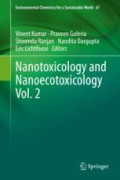
Nanotoxicology and Nanoecotoxicology Vol. 2
This book reviews advances in the toxicity of nanomaterials, with a focus on nanosensors and nanotoxicity testing, biomagnification, biotransformation, nanosafety, genotoxicity, human health and r…
- Edition
- 1
- ISBN/ISSN
- 978-3-030-69492-0
- Collation
- xii, 305p.:ill
- Series Title
- -
- Call Number
- 363.73 Nan

Metal, Metal-Oxides and Metal-Organic Frameworks for Environmental Remediation
This book reviews principles, techniques and applications of metal, metal oxides, metal sulfides and metal-organic frameworks for removal and degradation of pollutants. Natural materials are often …
- Edition
- 1
- ISBN/ISSN
- 978-3-030-68976-6
- Collation
- xiv, 285p.:Ill
- Series Title
- -
- Call Number
- 628.4 Met
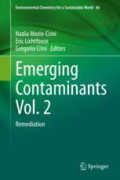
Emerging Contaminants Vol. 2
Emerging contaminants are chemical and biological agents for which there is growing concern about their potential health and environmental effects. The threat lies in the fact that the sources, fat…
- Edition
- 1
- ISBN/ISSN
- 978-3-030-69090-8
- Collation
- xvi, 401p.:ill
- Series Title
- Environmental Chemistry for a Sustainable World
- Call Number
- 553.7 Eme
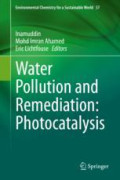
Water Pollution and Remediation: Photocatalysis
In the context of climate change and fossil fuel pollution, solar energy appears as a cheap and sustainable fuel for many environmental applications, yet the efficiency of techniques has to be impr…
- Edition
- 1
- ISBN/ISSN
- 978-3-030-54723-3
- Collation
- xv, 438p.:ill
- Series Title
- Environmental Chemistry for a Sustainable World
- Call Number
- 577.6 Wat
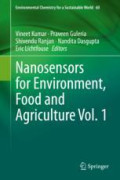
Nanosensors for Environment, Food and Agriculture Vol. 1
Nanosensors enable us to specifically detect pollutants that can adversely affect the quality of life. This book covers the design, application and safety aspects of nanomaterial-based sensors. The…
- Edition
- 1
- ISBN/ISSN
- 978-3-030-63245-8
- Collation
- xiv, 265p.:Ill
- Series Title
- -
- Call Number
- 620.5 Nan
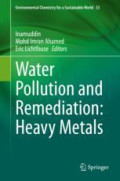
Water Pollution and Remediation: Heavy Metals
Pollution of waters by toxic metals is accelerating worldwide due to industrial and population growth, notably in countries having poor environmental laws, resulting in many diseases such as cancer…
- Edition
- 1
- ISBN/ISSN
- 978-3-030-52421-0
- Collation
- xvii, 581p.:ill
- Series Title
- -
- Call Number
- 363.7 War
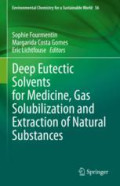
Deep Eutectic Solvents for Medicine, Gas Solubilization and Extraction of Nat…
Initially considered as a sub-class of ionic liquids, eutectic mixtures are formed by mixtures of low cost, often biodegradable Lewis or Bronsted acids and bases. Eutectic mixtures have gathered a …
- Edition
- 1
- ISBN/ISSN
- 978-3-030-53069-3
- Collation
- XII, 312p.:ill
- Series Title
- -
- Call Number
- 553.2 Dee

Metal and Metal Oxides for Energy and Electronics
Energy is a key world issue in the context of climate change and increasing population, 'calling for alternative fuels, better energy storage, and energy-saving devices. This books reviews the prin…
- Edition
- 1
- ISBN/ISSN
- 978-3-030-53065-5
- Collation
- xvi, 402p.:ill
- Series Title
- -
- Call Number
- 553.4 Met
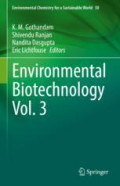
Environmental Biotechnology Vol. 3
This volume is a collection of informative chapters on various subjects. It provides information on the effects of pesticides on avian fauna, the impact of microbial ecosystems to solve environment…
- Edition
- 1
- ISBN/ISSN
- 978-3-030-48973-1
- Collation
- xii, 248p.:Ill.
- Series Title
- Environmental Chemistry for a Sustainable World
- Call Number
- 577 Env
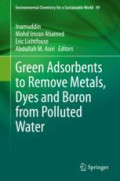
Green Adsorbents to Remove Metals, Dyes and Boron from Polluted Water
This book reviews adsorption techniques to clean wastewater, with focus on pollution by dyes and heavy metals. Advanced adsorbents include carbon nanomaterials, biomass, cellulose, polymers, clay, …
- Edition
- 1
- ISBN/ISSN
- 978-3-030-47400-3
- Collation
- XIII, 462p.:ill
- Series Title
- -
- Call Number
- 577.14 Gre





 Computer Science, Information & General Works
Computer Science, Information & General Works  Philosophy & Psychology
Philosophy & Psychology  Religion
Religion  Social Sciences
Social Sciences  Language
Language  Pure Science
Pure Science  Applied Sciences
Applied Sciences  Art & Recreation
Art & Recreation  Literature
Literature  History & Geography
History & Geography